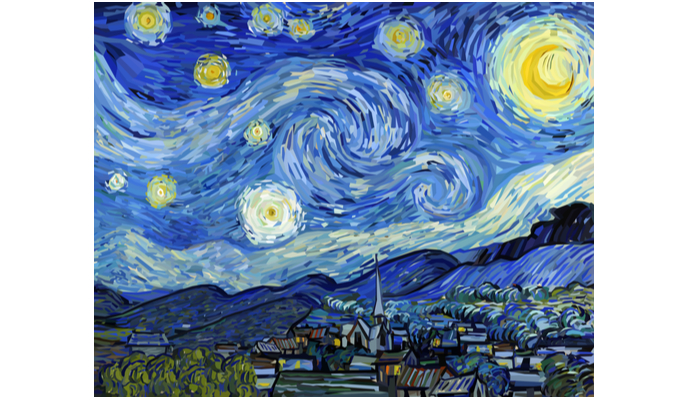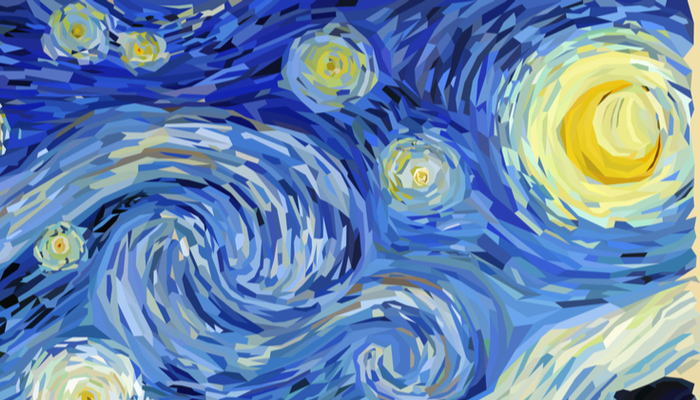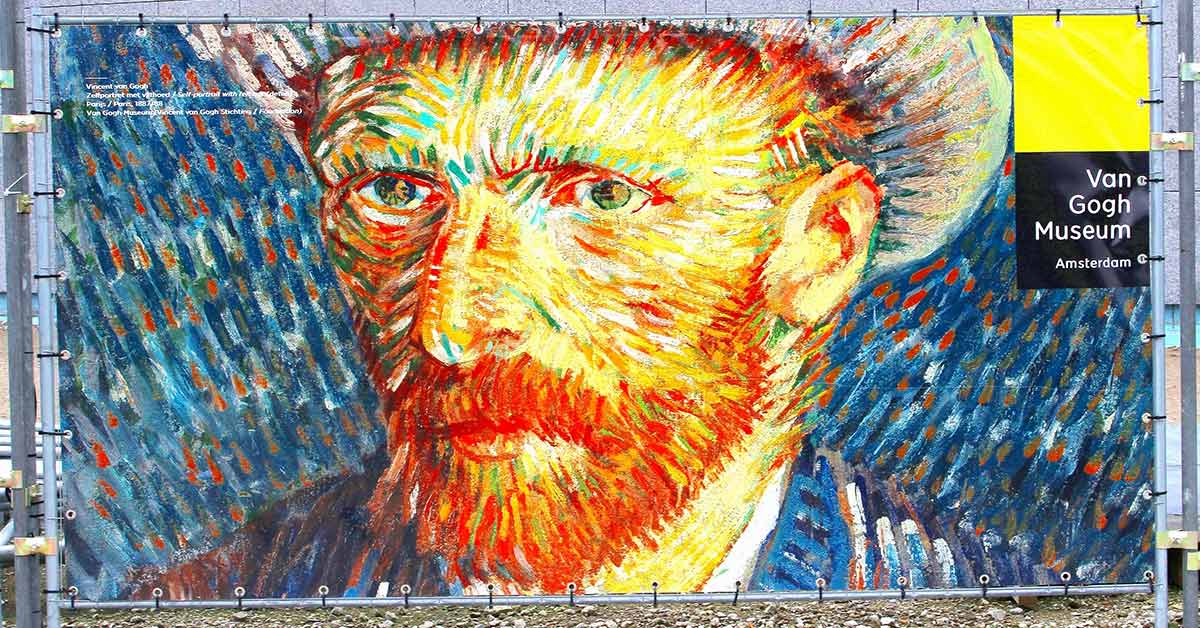We often think of art as something that is almost the opposite of math and science. Art is all about seeing things in a different way and exploring our creative mind – breaking all the rules if you will. Math and science, however, are all about finding patterns and rules and applying them. Starry Night, one of painter Vincent van Gogh’s most famous works, shows that perhaps there is a bridge to be gapped between the two after all.
The Unexpected Math Behind Vincent van Gogh’s Starry Night
We’ve all heard and probably seen at least a photo of Vincent van Gogh’s painting Starry Night. It’s one of the celebrated painter’s most famous works of art. In the 125 years since he painted it, millions of people have gone to see it. Despite this number of people admiring and scouring the details of the painting, only recently has this one detail really been noticed. It is the unexpected math that is hiding behind van Gogh’s masterpiece. (1)

Turbulent Flow in Fluid Dynamics
Turbulent flow in fluid dynamics is one of the hardest patterns that humans have tried to understand. In fact, we still don’t completely understand it. This is the fluid motion characterized by chaotic changes in pressure and flow velocity. It refers to irregular flows in which eddies, swirls, and flow instabilities occur. Mathematically it has been very difficult for scientists and mathematicians to understand and map out. We can use art, however, to depict how it looks. (2)
This is just what Vincent van Gogh did in June of 1889 when he painted the view just before sunrise. The view was one he could see from the window of his room at the Saint-Paul-de-Mausole asylum in Saint-Remy-De-Provence in France. Known for his battles with mental health, he was living there after admitting himself on his own accord. This was because of a psychotic episode he suffered that caused him to mutilate his own ear.

Read: Science Has A Theory About Those People Who Don’t Return Shopping Carts
It’s All In How He Painted The Stars
In The Starry Night, van Gogh used circular brush strokes to create one of the most fascinating depictions of the night’s sky we’ve ever seen. He depicts a sky filled with eddies of stars and swirling clouds. An impressionist, the goal was to represent light in a way that almost makes it look to the eye as if it is actually moving. So the stars in the painting appear to twinkle and the clouds swirl about.
The effect of his color choices and brush strokes causes two parts of our brain to both work against each other and together. One cortex wants to divide the colors while the other wants to blend them together. This subsequently to our eyes makes them look like they are pulsing or moving. The idea is to capture the reality of how light moves on a canvas.
Scientists Reminded of van Gogh’s Famous Work
In 2004, using the Hubble spacecraft, scientists were able to see the eddies of a distant cloud of gas and dust around a star. This reminded them of van Gogh’s Starry Night. This was the kick-start for scientists from countries around the world, including from Mexico, Spain, and England, to study the luminescence in van Gogh’s paintings in much more detail.
From studying the artworks, they realized that there is a distinct pattern of turbulent fluid structures that are close to famous Soviet mathematician Andrey Komolgorov’s theories of turbulence. He furthered the understanding of turbulence after he theorized that in a turbulent fluid at length R varies in proportion to the five-thirds power of R. Experiments show that Komolgorov was actually shockingly close to how turbulence actually works.
This pattern of turbulent fluid structures can be found hidden in several of van Gogh’s paintings. The researchers put the paintings in digital format so that they could measure how brightness varies between any two pixels. They concluded that the paintings van Gogh created during his periods of psychotic agitation behave very similarly to fluid turbulence. His paintings from calmer periods of his life, however, do not. Other artists’ works that also seemed quite turbulent upon the first look also did not behave this way.
The next time you are looking at one of van Gogh’s paintings, you can have a greater appreciation of the masterpiece that it truly is. In a period of intense suffering in his life, he was still able to depict one of the most difficult concepts that are still stumping scientists today.
Keep Reading: China Just Turned On Its Artificial Sun
Sources
- “The unexpected math behind Van Gogh’s “Starry Night” – Natalya St. Clair.” Youtube. TED Ed.
- “What is Turbulent Flow?” Simscale

